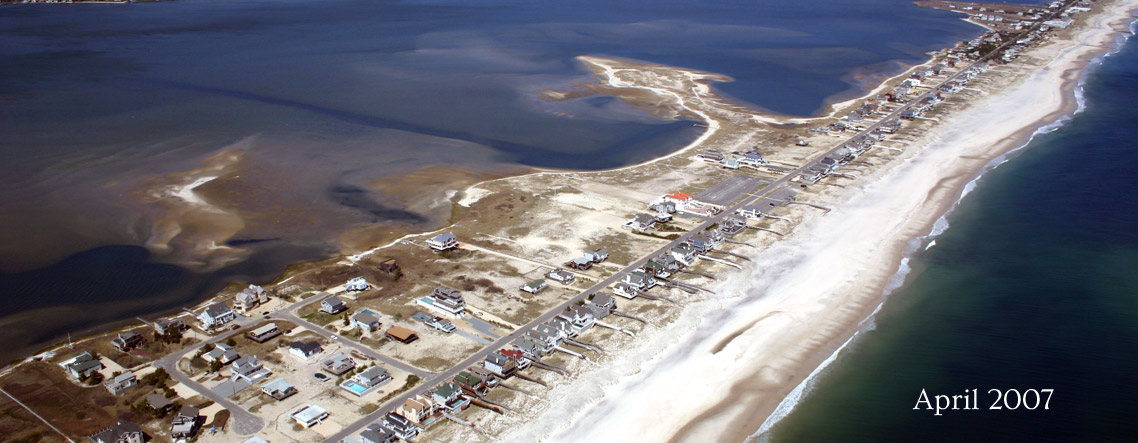By 1992, the barrier island at West Hampton Dunes had been severely narrowed and the dunes completely leveled. It was apparent to some of us that our community was in peril. However, despite our obvious vulnerability, no government agency would come to our assistance. After repeated pleas to the federal, state, county and town governments, we were completely ignored. That changed in December 1992 when a north-east storm cut through the island, creating a breach that connected the Atlantic Ocean to Moriches Bay and flooded the mainland Remsenburg with level tides and waves comparable to Hurricane 38.
The really good news is that today, none of that damage at West Hampton Dunes is visible and last year our beach was named the “Best of the Best” beaches in America. Our beach and dune is so healthy that Superstorm Sandy caused no impact to the homes, infrastructure and public access along our two miles of oceanfront. Sandy was the coming out party for West Hampton Dunes.
I offer our experience then and now to our neighbors in Quogue as an example of what might be achieved for the whole community when it unites to protect its most precious natural asset. How we went from the poster child for coastal mismanagement to the blueprint of coastal erosion management is a story of individual and group commitment to act instead of ask, steadfast engagement with all levels of the government and a complete refusal to listen to naysayers and critics. Looking through some old clippings the other day, I came across a quote from a noted critic who said, “I would stake whatever reputation I have on this: it’s not going to work”. Well, I don’t know what happened to his reputation, but I do know what happened to our beaches – and our very souls.. He was wrong. It worked. Our beaches have enhanced our whole lives – and recently protected us from Sandy, too. Over the years we have provided public access to millions of people – and we’ve fledged hundreds of piping plover.
Two decades after our devastation and 13 years after our beach was restored, it would be sad and surprising if any other communities were to fall victim to the same inertia and bromides that so disastrously delayed our recovery. I simply cannot count the number of times people tried to convince me that there was nothing anyone could do. I heard every excuse in the book about how it was too costly, how the environment would be compromised, how it was just welfare for the rich and the list goes on. In fact, none of that is true.
In the wake of Superstorm Sandy, the refrain may be that “you can’t fight mother nature” and we should all “retreat” from the oceanfront. To all this defeatism, we say “Never Give Up.” There are manifold examples that beaches can be restored by natural means – I emphasize natural means – and in so doing provide hurricane level protection for inland areas, for varied public recreation and for the benefit of the natural habitat.
Natural beach restoration, is the process of placing millions of tons of beach- compatible sand to widen and heighten the beaches and dunes. That is the proven benefit in West Hampton Dunes and scores and scores of other communities. Conversely, procrastination is demonstrably devastating both to economies and to the environment. Just ask those who lived through the 1992 breach in West Hampton Dunes or to those in Long beach and the Rockaways that had no dunes at all.
I have spent decades becoming educated about the causes of beach erosion and the various solutions. I’ve witnessed the incredible economic advantages of beach restorations on our local community, including the schools districts. For example, before the breach at West Hampton Dunes our two miles of beach contributed about 10-12% of the Remsenburg-Speonk school budget, despite sending no students to the school. After the breach, our tax contribution was less than 0.5%. Today, our two miles of beach contributes almost 25% of the $13.2 million school budget. Our total taxable value went from just under $150,000 in 1992 to $750,000,000 14 years later. None of these economic benefits to the schools could have been realized without beach restoration.
In addition to taxes, a protected barrier island sustains trade and employment. Any number of local business people thrive because we saved our beaches. From builders to bakers and landscapers to lingerie, our local businesses can’t survive without the attraction of high quality beaches. They count on leaders in the communities to do what is necessary and we at West Hampton Dunes have no doubt that beach restoration is the most cost effective, environmentally beneficial and economically beneficial coastal erosion management technique for something around $800 per beach front square foot.
I have always wondered why so many people tried to talk our community out of beach restoration. Why would anyone want us to be hurt, our homes destroyed and our lives irrevocably changed? I have never really been able to answer that question satisfactorily. But there are a few things that I know for sure. First, all those who love and appreciate what the ocean front has to offer have to fight to preserve it . If they don’t there will be no beaches left for anyone and for the next generation. Second is that beach restoration works for the whole community from beach to inland. I see that our neighbors in Sagaponack and Bridgehampton have acted to save their beaches. I hope that the wonderful village of Quogue becomes another jewel in the necklace of restored and revitalized beaches.

photos: Used with permission. Copyright 2013 First Coastal Corporation

